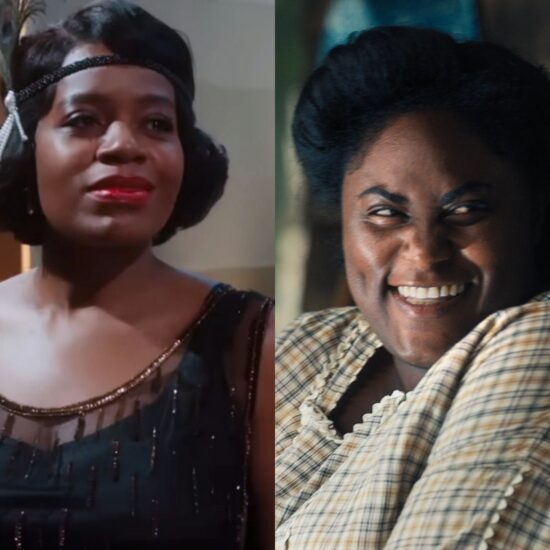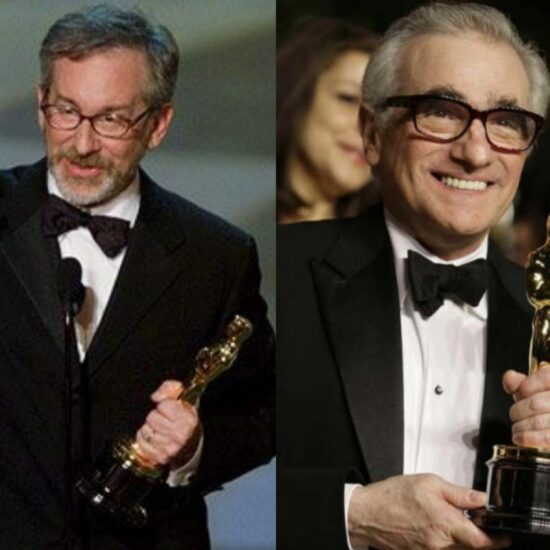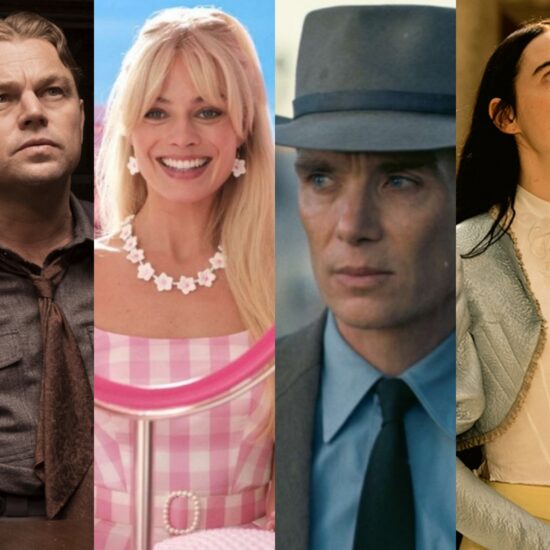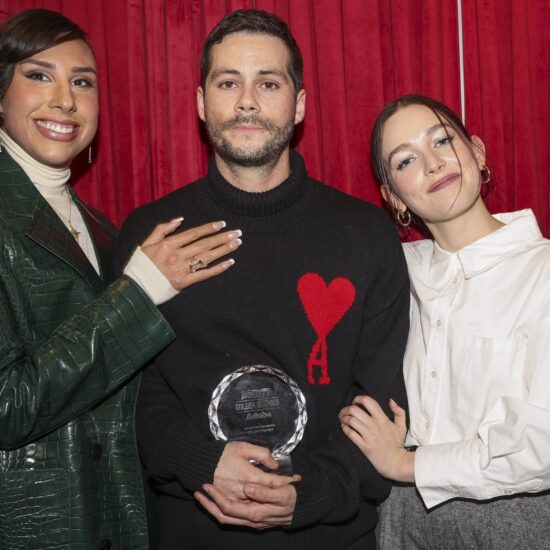
While the fall festival season often plays home to the kind of films we’ve been buzzing about for quite some time (here are 36 of those very titles), the kind of features long set for “awards season potential” before they roll so much as a trailer, the sort of heavy-hitters we’re eager to keep chatting about for months and months (here are 16 in particular that we loved), there are always a wide variety of gems that arrive on the circuit still looking for homes (read: a way to reach the wider movie-going public).
This year’s season is no exception, and while the two on-going Hollywood strikes have thrown more than a few wrenches into business-as-usual, the rise of interim agreements and the need for many non-AMPTP distributors to bulk up their slates mean that sales should still be cooking. While Netflix has already done the bulk of this season’s buying, we’ve picked out a number of hot titles still looking for homes, through streamers, bouquet shingles, and more.
In the mood for spending? Ahead, we’ve got 19 films just itching to be bought.
Ryan Lattanzio, Christian Blauvelt, Christian Zilko, and Robert Daniels also contributed to this article.
“The Beast”
An arthouse distributor with faith in its audience will find one with Bertrand Bonello’s time-bending, audacious sci-fi romance “The Beast,” starring Léa Seydoux and George MacKay as star-crossed lovers reincarnated over three time periods. French director Bonello’s films tend to receive niche distribution in the U.S. His experimental Yves Saint Laurent biopic “Saint Laurent” from 2014 played in the States courtesy of Sony Pictures Classics, but he’s since to receive as significant a berth. That film, to be fair, was France’s entry for Best International Feature Film; “The Beast” will not be, as the country already has Palme d’Or winner “Anatomy of a Fall” and Cannes Best Director winner The Taste of Things to choose from.
“The Beast” is two and a half hours long but rarely feels that way. I am loathe to apply the term “Lynchian” to Bonello’s aesthetic here, as it feels like a reduction of what he’s trying to do here even in slinky moments of a seedy, neon-lit Los Angeles refracting the dark mirror of stardom. But a distributor could play up that element to reach a broader arthouse audience; it’s a challenging movie but not inaccessible. “The Beast” could have used a prize win at the Venice Film Festival where it premiered in competition, and in fact, many on the ground were surprised it didn’t receive one from Damien Chazelle’s jury. New York Film Festival audiences, who always embrace Bonello, should give this film the warm stateside welcome it deserves after playing in Italy and TIFF, and buyers should take note. —RL

“The Contestant”
It takes chutzpah to open your documentary with archival footage of a news anchor saying “If you put what we’re about to show you in a movie, I doubt anyone would believe it,” but Clair Titley’s “The Contestant” has the goods to back it up. If the story told here were the subject of a scripted biopic, it would smack of exaggeration or gross dramatic license; if it were told in a narrative film, it would seem about as realistic as Park Chan-wook’s “Oldboy,” which might be the work of fiction that it most closely resembles.
Alas, the harrowing tale of the cruelest reality show ever conceived is all too believable, in large part because what happened on a segment of a Japanese variety show at the end of the 20th century has proven frighteningly predictive of the torturous mind games that reality television programs have inflicted upon their contestants ever since. Then again, there’s never been another reality television program quite like “A Life in Prizes,” in which a man nicknamed Nasubi randomly “won” the chance to be stripped naked, placed in a small room without food or clothes, and told that he could only survive on the prizes he won from the mail-in contests in the magazines supplied to him.
Titley’s sure-handed film compellingly recounts one of the strangest and most sordid episodes in television history, its escalating horrors so bizarre that anyone watching “The Contestant” is likely to be as riveted by Nasubi’s story as “A Life in Prizes” viewers were as they first watched it unfold. Titley’s doc is short, easy to pitch, and queasily addictive to anyone who’s ever watched reality TV against their better judgment; for that reason, it would be a popular and perversely natural fit among Netflix or Hulu’s streaming libraries, though a smaller distributor would also do well to pick up a title that’s impossible to put down. —DE
“Copa ‘71”
As far as opening scenes go, it is hard to think of one that gets a film’s message across as well at this TIFF premiere starting with Brandi Chastain, icon of women’s soccer who played in the inaugural 1991 FIFA Women’s World Cup, being handed an iPad showing another women’s soccer match played two decades earlier, with the reveal that there was a whole other women’s world cup she didn’t even know about. One that happens to be the most widely attended women’s sporting event of all time.
As standard a sports documentary as the Venus and Serena Williams executive produced “Copa ‘71” is, the film is an infuriating, yet enjoyable corrective that reminds audiences that there are so many historic firsts erased by time. Even past the documentary itself, there is so much potential for the archival footage of the unofficial 1971 Women’s World Cup that directors Rachel Ramsay and James Erskine unearth, clarifying to a new generation that women’s sports has a longer, arduous, glorious history than widely realized. —MJ
“The End We Start from”
Actress Jodie Comer and screenwriter Alice Birch are UK talents that offer plenty of dividends for those invested in their work. The former is already an Emmy and Tony winner at 30 years old, and has already generated Oscar buzz with pivotal roles in “The Last Duel” and “The Bikeriders.” Meanwhile, Birch has a stellar lineup of TV series under her belt, including “Normal People” and “Dead Ringers,” and penned two great Florence Pugh roles: “Lady Macbeth” and “The Wonder.”
Comer and Birch working together on “The End We Start from” is a historic link-up, enhanced by the direction of Mahalia Belo, making her first feature intended for theatrical distribution. Though the film can be described as a mother figuring out how to raise her newborn in a post-apocalyptic world, that premise is realized in a spookily lifelike way. While bigger names like Benedict Cumberbatch and Mark Strong pop up throughout the tight duration of the film, it’s the pairing of Comer and Katherine Waterston in particular that feels freshest, maybe even eliciting some tears too. —MJ

“Flipside”
“Flipside,” an endearing, dizzying documentary about the crushing convergence between art and commerce, begins with a common cold open. What we presume to be our enigmatic subject, the late legendary jazz photographer Herman Leonard, offers us a few pearls of wisdom that have led to his success. An array of close-ups of the singular, black and white portraits he took of Duke Ellington, Frank Sinatra, and Nat King Cole, from a retrospective exhibition of his work, further instills his importance to an unknowing audience. These are also Leonard’s final days. He’s dying from cancer. From the opening, we think “Flipside” will be a “great man you must know more about” story.
But this documentary isn’t about the jazz photographer. At least, not directly. There are other stories: A woman writer battling writer’s block, “This American Life” creator Ira Glass’ musical, and the documentary’s primary inspiration, a tiny record store in Pompton Lakes, New Jersey, called Flipside Records. These are all unrealized ideas director Chris Wilcha once had for documentaries. But over the years, by way of life’s curves, commercial jobs, and the shockingly fleet passage of time — none of them have come to fruition. This film picks up those loose ends, combining them into a single picture of how artists must often set aside their dreams for stability, and the regrets and joys that follow such decisions. —RD
“Gonzo Girl”
The year is 1992. But in the high-spirited (and often just plain high) atmosphere of Hunter S. Thompson’s — sorry, “Walker Reade’s” — Colorado compound, it is perpetually 1975. And young Alley Russo (a luminous, deeply feeling Camila Morrone) is about to travel back in time. But will she be able to come back?
Alley’s story, the heart of Patricia Arquette’s energetic feature directorial debut, is nothing new. Hell, it’s not even new to her. Based on Cheryl Della Pietra’s memoir of the same name — and here adapted by writers Jessica Caldwell and Rebecca Thomas (who previously wrote and directed “Electrick Children,” which shares plenty of DNA with “Gonzo Girl”) — Arquette’s film addresses that very idea, that there are always going to be eager, bright young women willing to work themselves to the bone in hopes of it pushing into the next echelon of life. Many of them will work for famous men to do that. Plenty of them even did exactly what Della Pietra did: work for the mercurial founder of gonzo journalism himself, Hunter S. Thompson (here, refashioned as “Walker Reade,” with Willem Dafoe aces at HST drag).
Morrone has frequently turned in exciting performances, from indie film (“Never Goin’ Back,” “Mickey and the Bear”) to prestige TV (“Daisy Jones & the Six”), but Arquette’s film is the best example yet of her insane star power and wild magnetism. Any distro looking to capitalize on her rising fame would do well to buy the film ASAP. —KE
“Holly”
Belgian director Fien Troch’s “Holly” feels like if Gus Van Sant directed “Carrie,” however an enigmatic and bloodless upside-twist on Stephen King’s iconic tale this Venice competition premiere is. The ritual humiliations of girlhood play out through the eyes of the title character, played by Cathalina Geeraerts, a high-school outcast bullied by most of her peers with no friends beyond her sister (Maya Louisa Sterkendries) and platonic-seeming, possibly neurodivergent boyfriend Bart (Felix Heremans). But Holly one day has a premonition that tells her not to go to school, she calls out sick, and next thing you know, the school building is burning down. Nine months later, an in memoriam mural indicates that at least 10 students died in the fire. Now, Holly is seen by her classmates as a kind of folk hero not only because of her preordained knowledge of events but also because her powers now extend beyond predicting the future and to talking to the dead (including the fire’s victims) and healing the sick, wounded, infertile, and heartbroken through touch.
“Close” cinematographer Frank van den Eeden films “Holly” in a (what else but, these days) boxy ratio that, containing this particular coming-of-age stories, recalls Van Sant’s “Paranoid Park” and even “Elephant” in its lush treatment of high school traumas. Composer Johnny Jewel leans heavily into his “Twin Peaks” era with a synthified score that feels ominous and melodramatic at the same time (just as Angelo Badalamenti’s work did for David Lynch’s series). Troch’s features have never found a proper home in the U.S., and while “Holly” may prove a shade too elliptical for some (a lot of unfinished business is left on the table, which just means more to haunt you with) but this eerie coming-of-age drama could drum up interest on the arthouse or niche streaming end of spectrum. (Belgium already picked its Oscar entry, rapper Baloji’s “Omen.”) —RL

“Hollywoodgate”
A feature-length documentary about the Taliban will never scream “commercial appeal.” But “Hollywoodgate,” if handled properly by a smart distro, could emerge as a top contender for the Best Documentary Feature Oscar. As an act of journalistic daring, it’s hard to beat: Berlin-based Egyptian reporter Ibrahim Nash’at was granted access to embed in the Taliban’s inner circle for an entire year following their takeover of Afghanistan once again in 2021. “If his intentions are bad, he will die soon,” one Taliban leader says of the filmmaker.
It’s obviously an example of access journalism, but in the best possible way: Much of what we see is what the Taliban wants us to see, but as that’s what’s really important to them, it’s also what we — anyone who’s a non-fundamentalist — need to see to understand them. One Talib gives a metaphor for why they want women to wear a burqa. Throw two pieces of chocolate on the ground, he says, one has a wrapper on it, the other doesn’t. Which one do you want to eat? Vile as that is, this is absolutely what this Talib wants to convey to Nash’at. And that’s the highest outcome that can emerge from access journalism: That what the subjects tell us is what we desperately need to know. —CB
“Les Indesirables”
French filmmaker Ladj Ly scored a surprise Oscar nomination with his debut, “Les Misérables”; with his second drama, another nom is not out of the question, but the film is still in need of a domestic distributor. Ly’s 2019 debut feature, “Les Misérables,” took 15 years to make but received kudos in France and scored a 2020 Oscar nomination. Ly received multiple offers to direct Hollywood films, but chose to return to France and make “Les Indésirables,” which Ly initially called “Bâtiment 5” after the grubby high-rise tenement — now razed — where he grew up outside Paris.
From the start, Ly ratchets the tension with the residents’ tamped-down anger. The film’s opening, in which six men carry a coffin down six flights of stairs, is torturous to watch and sets up the living conditions the characters endure. The director recreated his “Les Misérables” filmmaking team and fashioned another fictional screenplay (with Giordano Gederlini) based on true events. This time, Ly had a bigger budget, but his methods didn’t change. He wants to keeps the energy going during filming as much as possible. For the major set piece that showed the evacuation of the high rise, Ly shot for three weeks with as many as 150-200 extras, three cameras, and a crane amid the narrow spaces of the flats and the stairs. —AT
“Lee”
Making her feature directorial debut, cinematographer and documentary Oscar nominee (“The Betrayal”) Ellen Kuras directs Oscar-winner Kate Winslet (“The Reader”) in this biopic of British model-turned-war photographer Lee Miller, who covered World War II for Vogue magazine. Liz Hannah, John Collee and Marion Hume adapted the book “The Lives of Lee Miller” by Antony Penrose, who is played by Josh O’Connor in the film.
The film boasts a starry, well-respected supporting cast, including Marion Cotillard, Alexander Skarsgård, Andrea Riseborough, and Andy Samberg. And Kuras assembled a top-level crew to match: Oscar-winning composer Alexandre Desplat (“The Grand Budapest Hotel” and “The Shape of Water”), Oscar-winning costume designer Michael O’Connor (“The Duchess”), Oscar-nominated cinematographer Paweł Edelman (“The Pianist”) and BAFTA-winner Ivana Primorac (“The Darkest Hour”) as head makeup and hair artist. For distress in need of a “prestige” title to take them through awards season, “Lee” is a very smart buy indeed. —AT
“Lil Nas X: Long Live Montero”
Historically, the world has not been quick to embrace Black queer artists. Even the TIFF premiere of “Lil Nas X: Long Live Montero” faced a bomb threat. But the film itself, directed by Carlos López Estrada and Zac Manuel, surpasses the standard cinematic concert experience to show how the young rapper has already changed lives for the better during his so far brief time in the spotlight.
That is not to say his performances of hits like “Call Me by Your Name,” “Industry Baby,” and the record-breaking “Old Town Road” don’t have the theater jumping, but it also feels meaningful to see the way in which Nas’ family has come to accept him, and be inspired to live in their own truths. And the way the artist talks about things trying to hold him down, like protestors at his Boston show, ends up leading to some genuinely comedic lines, as the film also reminds viewers that Lil Nas X isn’t just a promising pop star, but a master troll. —MJ

“Memory”
In her latest film “Memory,” Jessica Chastain is out of the prosthetics and wigs and off the awards circuit (for now) required by playing two Tammys — Wynette and Faye Bakker — for Showtime’s “George & Tammy” and her Oscar-winning “Eyes of Tammy Faye.” To play Sylvia, a recovering alcoholic grappling with childhood trauma for Michel Franco’s devastating Venice and Toronto premiere “Memory,” the Oscar winner and Emmy nominee wears no makeup, had no trailer, and bought her own costumes for the indie’s New York shoot.
Peter Sarsgaard co-stars in “Memory” — the most empathetic portrait of broken people yet from the Mexican director of cold provocations like “New Order” and “Chronic” — as a sketchy-seeming former high school classmate of Sylvia’s who follows her home after a reunion. As the pair of damaged goods grow closer, we learn Saul also has dementia and lives under the care of his brother (Josh Charles) and niece (Elsie Fisher). The constantly and unpredictably refreshing slate of Saul’s psyche makes it easier for the troubled Sylvia to connect with him — but not after trying to exploit his memory impairment by falsely scapegoating him for her high school-aged abuse.
The contrivances, as much as they are governed by the laws of melodrama, fall away because veteran performers Chastain and Sarsgaard give a pair of haunting, expert performances as damaged people making sense of their own agony together. “Memory” is Franco’s most accessible film and one that any distributor could easily push into the indie awards race. Plus, it helps that the film has an interim agreement for festival promotion; this non-AMPTP film could therefore make a splash on the fall and winter awards trails. —RL
“The Monk and the Gun”
With his sophomore feature, Pawo Choyning Dorji has a chance to return to the Oscar race. When his first film “Lunana: A Yak in the Classroom” was accepted by the London Film Festival, he made connections around the world, from French and Swiss investors to Hollywood, as he tirelessly promoted the film, which wound up the first Bhutanese film submitted for the Oscar. It marked the first Oscar nomination for the tiny, long-isolated Buddhist country of Bhutan, which became the world’s last country to open itself to television and the Internet in 1999.
With so few films produced in the small mountain country, his second film “The Monk and the Gun,” made with more actors and a bigger budget, was also submitted this year. The movie, which debuted at Telluride, is a culture-clash story about a lama who wants his monk to find him a gun in time for the full moon, which is in four days. At the same time, a gun collector travels to Bhutan in search of an antique rifle which falls into the hands of the monk. Following Telluride and Toronto, “The Monk and the Gun” will be released in Bhutan, but is still in need of an American label. —AT

“Mountains”
Monica Sorelle’s touching feature debut “Mountains” centers on a Haitian family eking out a life in Miami amid encroaching gentrification and an unstable housing market. Working-class demolition worker Xavier (Atibon Nazaire) wants a bigger, even suburban (i.e. whiter) house for his family, which includes his seamstress wife Esperance (Sheila Anozier) and even their disappointing, college-dropout son Junior (Chris Renois). By day, Xavier helps knock down the very houses that the forces of gentrification are paving over, making him complicit in the bureaucratic machine that’s increasingly squeezing out the immigrants likes of Xavier and his family.
Haitian-American filmmaker Sorelle patiently observes their days and ways, while Esperance works as a crossing guard and Junior works as a parking lot attendant but has aspirations of becoming a stand-up comic. Everybody is dreaming of something bigger, and far out of the shadow of the tragic circumstances from which they’ve emigrated. “Mountains” is a patient, subtle movie that doesn’t imbue its telling with grand tragedy or ill-fated vicissitudes; rather, it basks in the loveliness of the life this family lives with a neorealist touch. Haitian-American cinema rarely gets a spotlight outside of festivals in the United States. “Mountains” is an accessible and well-considered feature that could enhance its more-than-worthy profile with the right arthouse distributor. —RL
“North Star”
Dispel the idea that “The English Patient” breakout is making an attempt at some sort of stately awards play. Kristin Scott Thomas’ directorial debut functions more like a British answer to “The Family Stone.” Set at her character’s wedding weekend, the TIFF premiere follows three sisters whose lives have been shaped by the sequential deaths of their war hero fathers who happen to have been best friends.
That particular familial detail stems from Thomas’ own life, but invention comes from feeding star Scarlett Johannson’s desire to play a role far from her personal experience, as Katherine, a pioneering queer officer of the Royal Navy. Sienna Miller gets to have just as much fun as starlet Victoria, with UK TV veteran Emily Beecham rounding out the cast as the sister who chose to be a homemaker. Though there are artful flourishes, like inkblot-esque animation sequences meant to invoke memories of the fathers, “North Star” is a kind of comfort food family dramedy that home audiences crave. —MJ
“In Restless Dreams: The Music of Paul Simon”
Paul Simon wanted a documentary. He was a fan of Alex Gibney’s 2015 “Sinatra: All or Nothing at All” and asked the Oscar-winner (“Taxi to the Dark Side”) to consider devoting a documentary to him on the occasion of recording his 15th album, “Seven Psalms” (Owl Records and Legacy Recordings, 2023). The result is “In Restless Dreams: The Music of Paul Simon,” which had its world premiere as an all-rights sales title at the Toronto International Film Festival.
The doc has a running time of three-and-a-half hours, which it sustains, thanks to Simon’s extraordinary, still-robust body of work that’s familiar to generations of fans. The Simon and Garfunkel story is fascinating — some may forget that a remixed “The Sound of Silence” rescued their early career, and that the duo who parted acrimoniously reunited briefly for a concert tour after their hugely successful 1981 Central Park Concert. The marvel of Gibney’s movie is the intimate, off-the-cuff material in the recording studios. Often, the sound engineer puts up pre-recorded tracks and Simon sings along for camera, working out the songs and playing with odd instruments like the chromelodeon. The movie reveals a more fragile side of Simon, who turns 82 this year, and a smart distributor or streamer could use the doc (which could easily be cut into two “episodes”) to remind audiences of his iconic role in the annals of American music. —AT

“Shoshana”
Michael Winterbottom’s portrait of British-occupied Palestine is a political thriller that treats the impossible decisions facing its protagonists with appropriate nuance. Telling the story of a romance between a moderate British officer who wants to build a modern Israel and a feminist operative who feels forced to compromise with dangerous nationalists to preserve her own existence, the film consistently avoids the temptation to become an ideological morality play.
Instead, it’s a humanistic portrait of the way our carefully crafted intellectual positions can collapse in the face of actual danger. Packaged with an ornate period backdrop that should appeal to the traditional arthouse crowd, “Shoshana” has all the makings of a sleeper hit for a distributor that knows how to package it. —CZ
“Solo”
Mainstream film has so far failed to reflect what a global phenomenon drag has become in wake of the reality competition “RuPaul’s Drag Race.” Though “Solo,” winner of the Best Canadian Feature Film Award at TIFF this year has nary a mention of the TV show, its success is in part how well it immerses viewers into Montreal’s gay nightlife scenes. Moments where lead Simon (Théodore Pellerin) performs rousing lip syncs of hits like ABBA’s “Voulez Vous” in a full face of makeup and willowy blond wig feel hypnotic.
In daylight, the film becomes a more standard relationship drama, with Simon pulled apart by a distant mother, and a new romance that turns pernicious, but at night the film comes alive. Though the Canadian films padding each year’s TIFF lineup can tend to lack mainstream vibes, the Sophie Dupuis-directed “Solo” seems to have legs as an unabashedly queer film with global appeal. —MJ
“Tehachapi”
Because his Oscar-nominated documentary “Faces Places” so charmingly puts co-director and subject Agnès Varda at the forefront, JR’s talent as a filmmaker feels underrated. However, in his new film “Tehachapi,” the French artist once again holds the frame with his charisma, yet wades into political waters even he did not expect to traverse. The title comes from a town in the California desert housing a supermax prison that gives JR the greenlight to cover its yard in his trademark paper and paste portraiture. A select group of inmates become part of the process, helping create and be subject of an interactive art project with ramifications that result in incremental prison reform.
“Tehachapi” is a healing journey that one can only hope finds a platform to bring its message of hope to more than just film festival attendees. So rarely do we get to see outreach result in measurable change, and it is all the more special how spontaneous JR comes upon it, now being a project he still works on in between showcasing this film about it. —MJ















